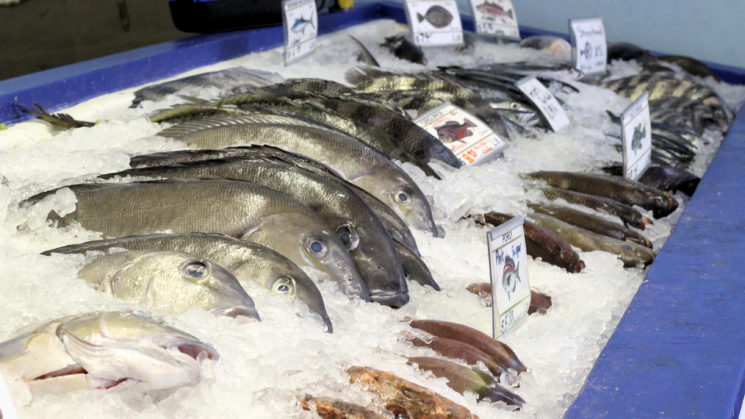
Above: Seasonality provides consumers the opportunity to enjoy a variety of fish throughout the year. Photo courtesy of Vanda Lewis.
BY N. KATIE DOUGLAS AND KATIE MOSHER
N. Katie Douglas is a program specialist with the Center for Environmental and Resource Economic Policy (CEnREP) at NC State University.
Imagine a vessel gliding through coastal waters, heading for Wanchese in Dare County. Upon arrival, the captain, mate and team at the fish house hustle to unload the day’s catch: baskets of blue crab.
North Carolina’s most harvested commercial species by pound, the blue crab will be sold in nearby seafood markets or trucked to farm-to-table restaurants in Raleigh or Charlotte. Other days, depending on market demands, it may be packed on ice, bound for New York, Boston or Washington, DC.
North Carolina’s commercial fishing industry is a complex economic puzzle with many pieces. In 2017, $97 million of wild-caught fish and shellfish were landed, over $16 million to Wanchese alone.
“These fisheries support local communities by providing important sources of employment, business income and food,” explains Jane Harrison, North Carolina Sea Grant’s coastal economist.
Harrison is leading a new research project to consider commercial fisheries’ impacts on state and local economies. The one-year study, which includes partners at three universities, is funded by the N.C. Commercial Fishing Resource Fund. The fund is jointly overseen by the Marine Fisheries Commission’s Commercial Resource Fund Committee and the Funding Committee for the N.C. Commercial Fishing Resource Fund.
The research team also includes Barry Nash, seafood technology and marketing specialist at North Carolina Sea Grant; Eric Edwards and Sara Sutherland, who are affiliates of the Center for Environmental and Resource Economic Policy at NC State University; as well as economists Chris Dumas of UNC-Wilmington; and John Whitehead of Appalachian State University.
They will follow seafood from coastal and ocean waters to the consumer, collecting and analyzing data from harvest to processing to distribution.
“We will gain nuanced information about costs and supply chains,” Harrison explains.
“The boats delivering fish from Pamlico Sound employ crew, the fish houses employ workers, etc. But what we need to fully understand is where the fish are going, because the impact on the state is determined by where the fish are processed and consumed,” Sutherland adds.
Those economic impacts will be broken down by sectors and counties. The team will share the data and analysis not only with policymakers who make decisions regarding commercial fisheries, but also with investors and entrepreneurs who can help drive growth in the sector.
For example, Harrison explains, a survey of seafood consumers will indicate their willingness to pay for N.C. seafood products, as compared to imports.
The estimation of consumer demand for N.C. seafood will be used to quantify how demand is being met currently, as well as the potential for expanded economic impact through additional in-state seafood sales and consumption.
##
This is one of three new projects jointly funded by the N.C. Commercial Fishing Resource Fund